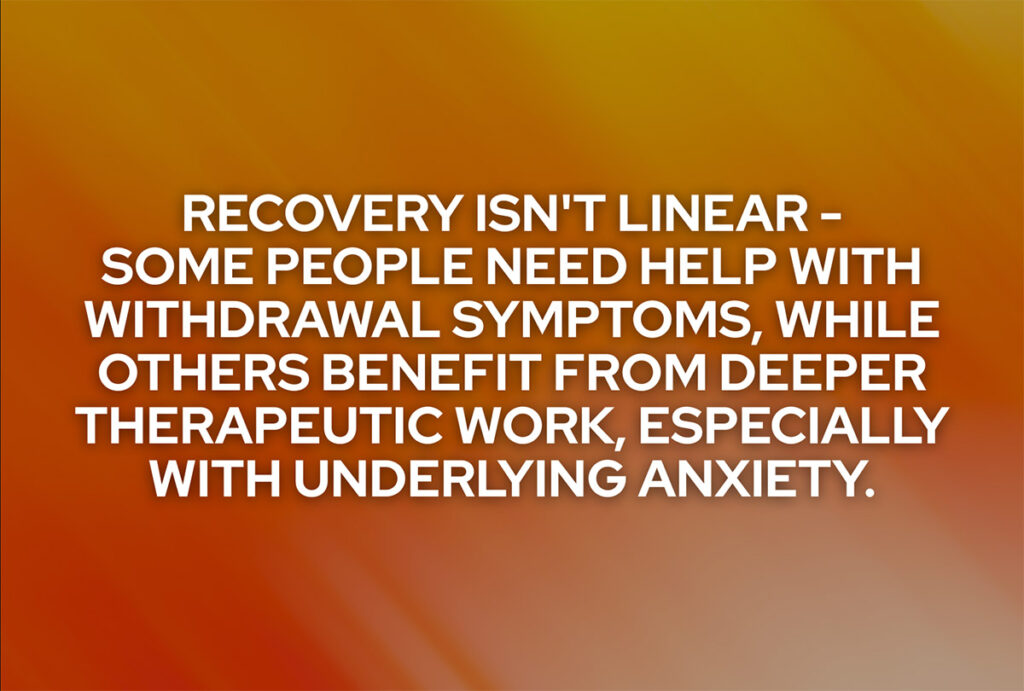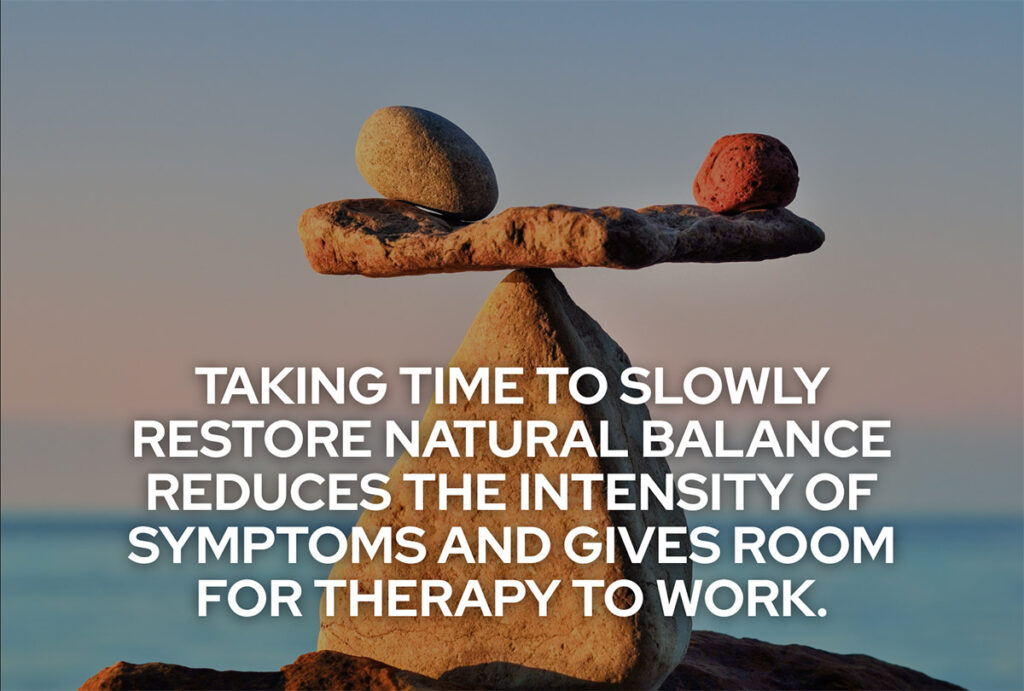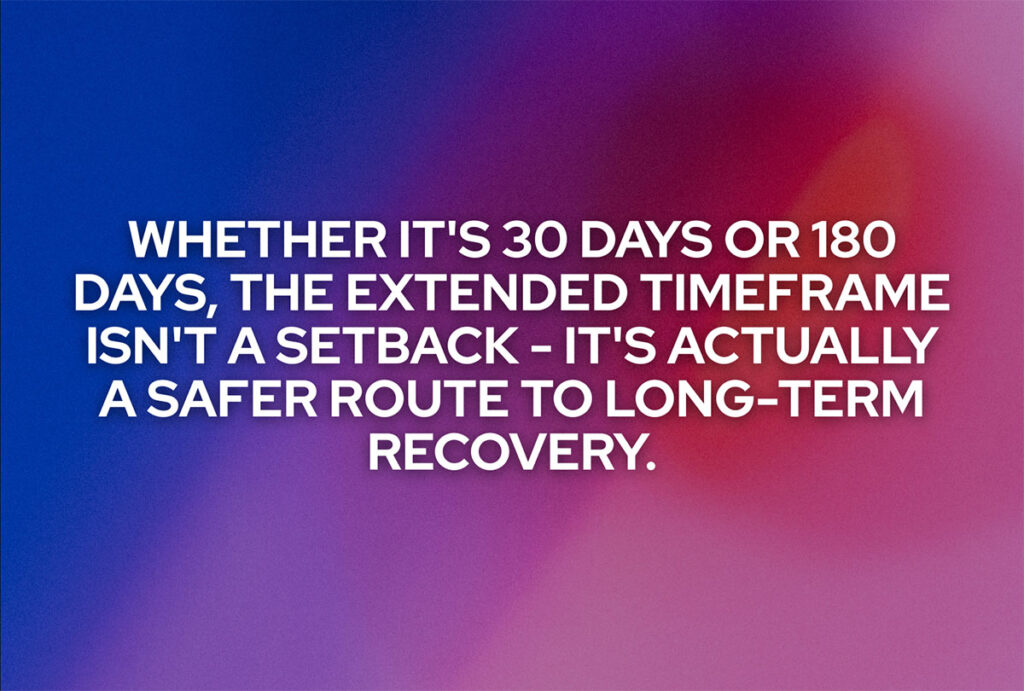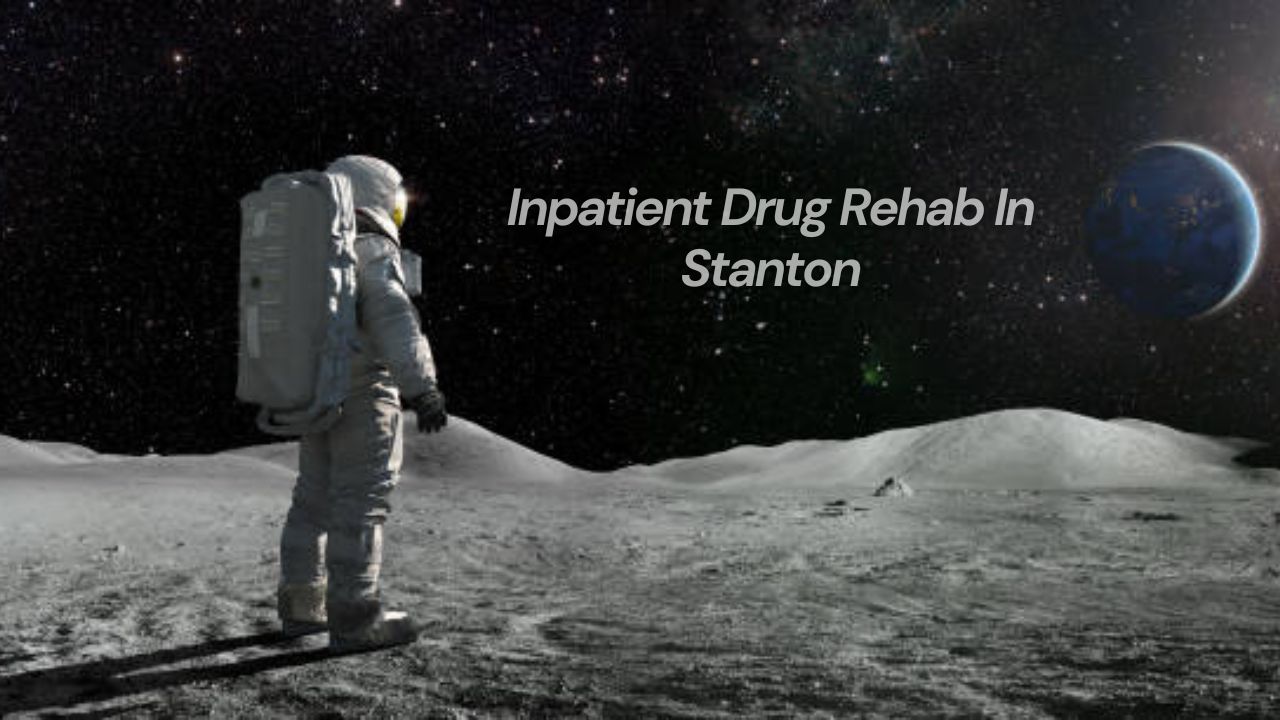Most inpatient programs will range from 30 to 90 days but this is dependent on how long the person has been taking benzodiazepines and how intense their symptoms are. In more complex cases, rehab can stretch to 180 days to allow for a slow and safe taper. Whereas, outpatient treatment typically last 8 to 12 weeks, though some continue longer when ongoing support is needed.

Benzo recovery isn’t linear but these numbers offer a guideline for recovery. Because benzodiazepines impact both the body and mind, some people need help with withdrawal symptoms but others might benefit from deeper therapeutic work, especially if they’ve used benzos for years or have underlying anxiety; every timeline reflects a unique combination of history, symptoms, and mental health.
What Factors Determine Benzo Rehab Length?
Several variables play into how long someone stays in benzo rehab. First and foremost is dependence severity. People who have taken high doses of benzodiazepines for years, especially drugs like Xanax, Ativan, or Valium, will likely need more time to safely taper off.
Another major factor is the taper schedule itself. Benzodiazepines differ in the amount of time it takes the body to eliminate them. They might be detectable for days or even months. Shorter acting benzos like Xanax withdrawal may start within 10-12 hours of stopping the drug. Longer acting benzodiazepine such as Valium may take a few days for symptoms to appear.

Cutting too quickly can trigger severe symptoms like seizures, panic attacks, hallucinations or rebound insomnia. In these cases, rehab becomes less about speed and more about safety. Around 10 percent of people, according to a study published by ABC News, may experience protracted withdrawal syndrome that can extend several months or even years after stopping use of a benzodiazepine.
Mental health plays a huge role as many clients enter treatment with co-occurring disorders. Managing these alongside withdrawal adds time but it’s essential to avoid relapse and support full recovery.
Why Do Some People Need 180-Day Programs?
While 30 and 60 day programs work well for some, others need the extra time that a 180 day program provides, especially if:
- They’ve used high doses of benzodiazepines for years
- They’ve tried to quit before and relapsed
- They’re dealing with prolonged withdrawal symptoms
- They have a dual diagnosis or unstable mental health
A 180-day rehab gives space to manage both the taper and the emotional recovery that follows. It also allows clinicians to adjust medications, introduce therapy slowly and reduce the risk of complications.
Some people have used benzodiazepines for a decade or more, and their nervous systems have adapted to the drug. Taking time to slowly restore natural balance reduces the intensity of symptoms and gives room for therapy to work. In the situations mentioned above, the extended timeframe isn’t a setback, it’s actually a safer route to long-term recovery.
How Do 30-Day and 60-Day Programs Compare?
Shorter benzo rehab programs offer different levels of care depending on the duration.
30-day programs tend to focus on medical detox and stabilization. They provide round-the-clock medical support during the most physically intense phase of withdrawal. It’s often the first step, and particularly useful for people who aren’t yet ready for in-depth therapy but need help starting the taper safely.
60-day programs provide more room for intensive therapy and a slower taper schedule. Clients have time to build new coping strategies, explore the root causes of their substance use, and start planning for reintegration into daily life. It’s a good fit for people who need more than detox but may not require an extended stay.
Both options are valuable and often used as stages in a broader recovery plan. Not everyone needs a six-month stay. For people with less intense use or strong external support systems, 30 or 60 day programs may be a better fit.
Can Outpatient Rehab Match Inpatient Benefits?
Outpatient rehab is an option for many people recovering from benzo dependence, especially those who are medically stable, highly motivated and have a safe, supportive environment at home.
Typical outpatient programs last 8 to 12 weeks and involve:
- Weekly or biweekly individual and group therapy
- Ongoing medication management
- Support for stress reduction and relapse prevention
Outpatient care offers more flexibility than inpatient treatment, allowing people to maintain work, school, or family commitments. However, it may not provide enough structure for those in the early stages of detox or with significant mental health concerns. That’s why many people start with inpatient care and then step down to outpatient once they’ve made progress.
How Do Co-Occurring Conditions Factor Into Benzo Rehab?
Many people who become dependent on benzodiazepines originally received them to treat underlying mental health issues—often anxiety-related. Over time, the line between medication management and dependence can blur.
In these cases, a dual-diagnosis treatment approach is essential. Rehab must address both the physical addiction and the mental health diagnosis; whether that’s anxiety, OCD, PTSD, or depression.

Skipping one or the other increases the chances of relapse but when both are treated together, recovery tends to be far more sustainable.
Which Stress Management Techniques Help After Rehab?
One of the hardest parts of benzo recovery is learning to manage stress without the medication. Fortunately, there are healthier ways to regulate your nervous system. During and after rehab, clients are taught long-term strategies to prevent relapse and stay balanced:
- Mindfulness and meditation
- Structured routines for sleep and meals
- Exercise to reduce anxiety
- Daily journaling or emotion tracking
- Breathing techniques to ground the body

These small changes can help calm the brain, reduce cravings and restore a sense of control.
Benzo rehab takes time, patience and expert support. Whether you’re tapering off a short-term prescription or working through years of use, there’s a path forward and we’re here to walk it with you.






